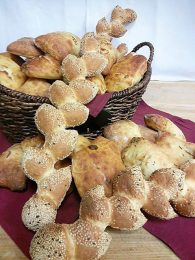Sous vide cooking is gaining momentum in food service operations and in home kitchens. When compared to traditional cooking, there are two differences. In sous vide cooking, raw food is vacuum packed in heat stable, food grade plastic bags. Then it is cooked at a precisely controlled temperature inside the bag.
The vacuum package protects the food from contamination, eliminates off-flavors, and prevents moisture loss during cooking. The bag of food is cooked in a water bath at a specific temperature which converts collagen into gelatin, reduces toughness, and reduces overcooking.
Limitations include lack of browning and those flavors developed by browning. Therefore, the food must be browned after sous vide cooking to make it more visually appealing. Food safety is a concern because of initial microbial content in the food; the cooking time and temperature; the cooling process after cooking; and storage. And, with vacuum packaging, a major concern is the growth of Clostridium botulinum.
Sous vide cooking is done with equipment designed for this type of cooking. This method of cooking is not recommended for anyone who is immune-compromised, any pregnant women, or young children.
Source: Food Technology, December 2017

